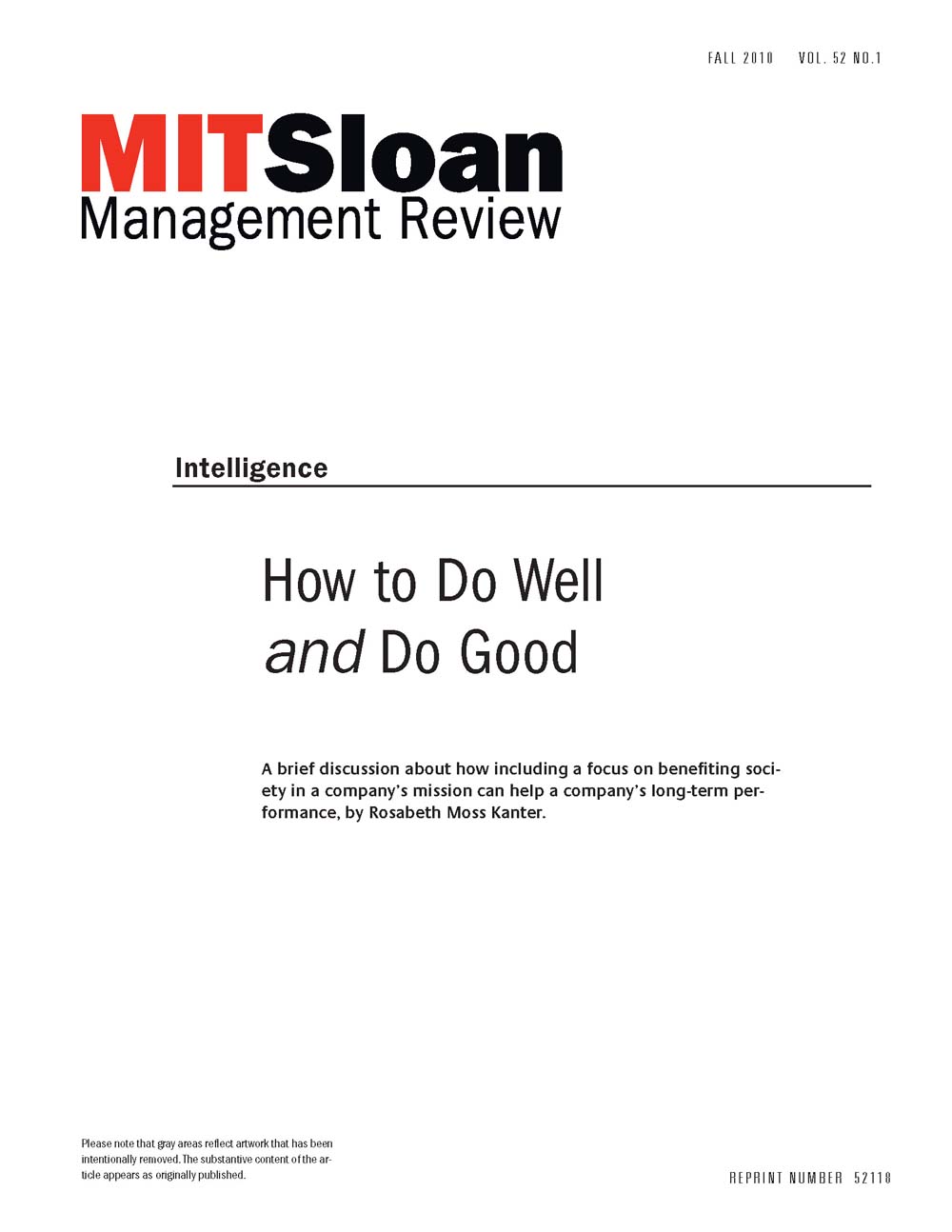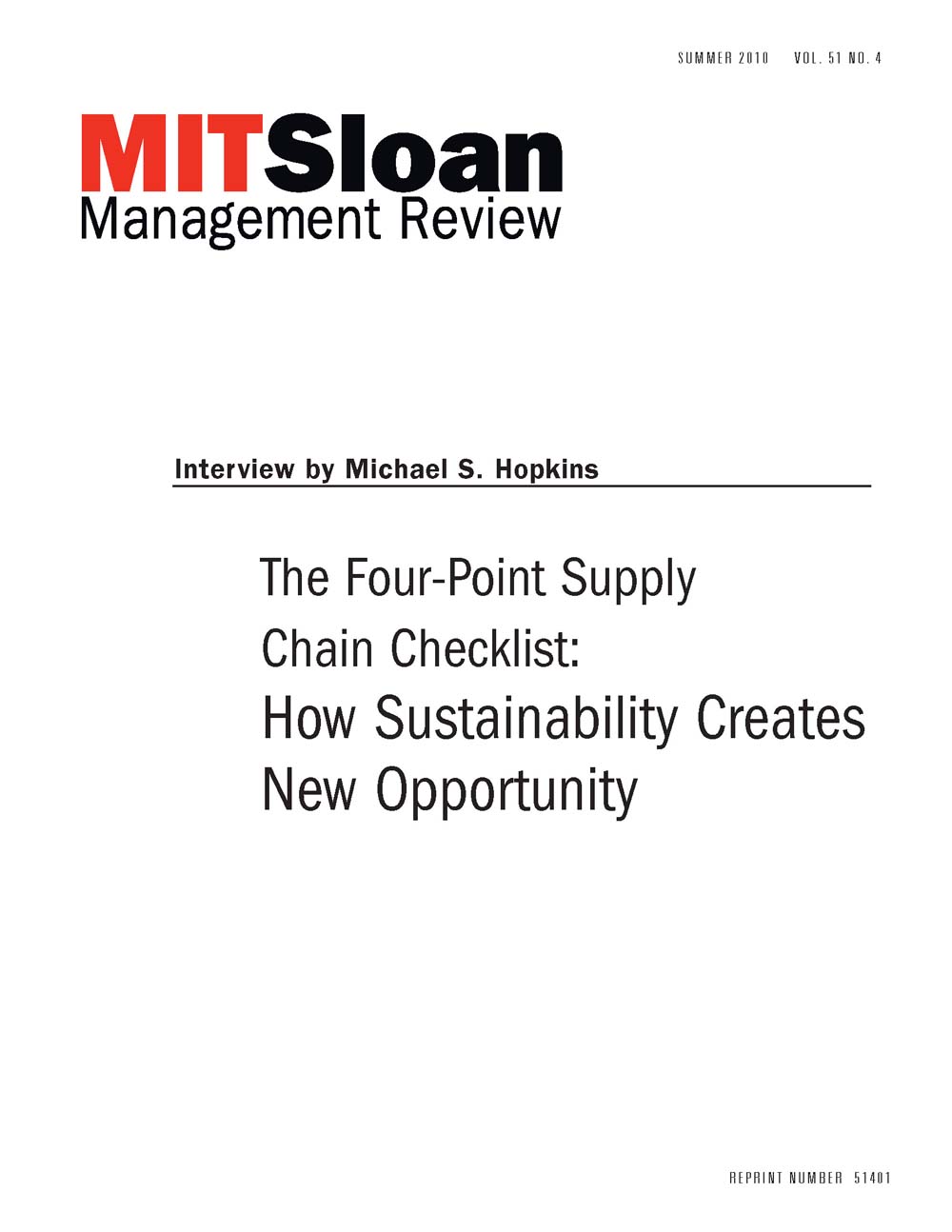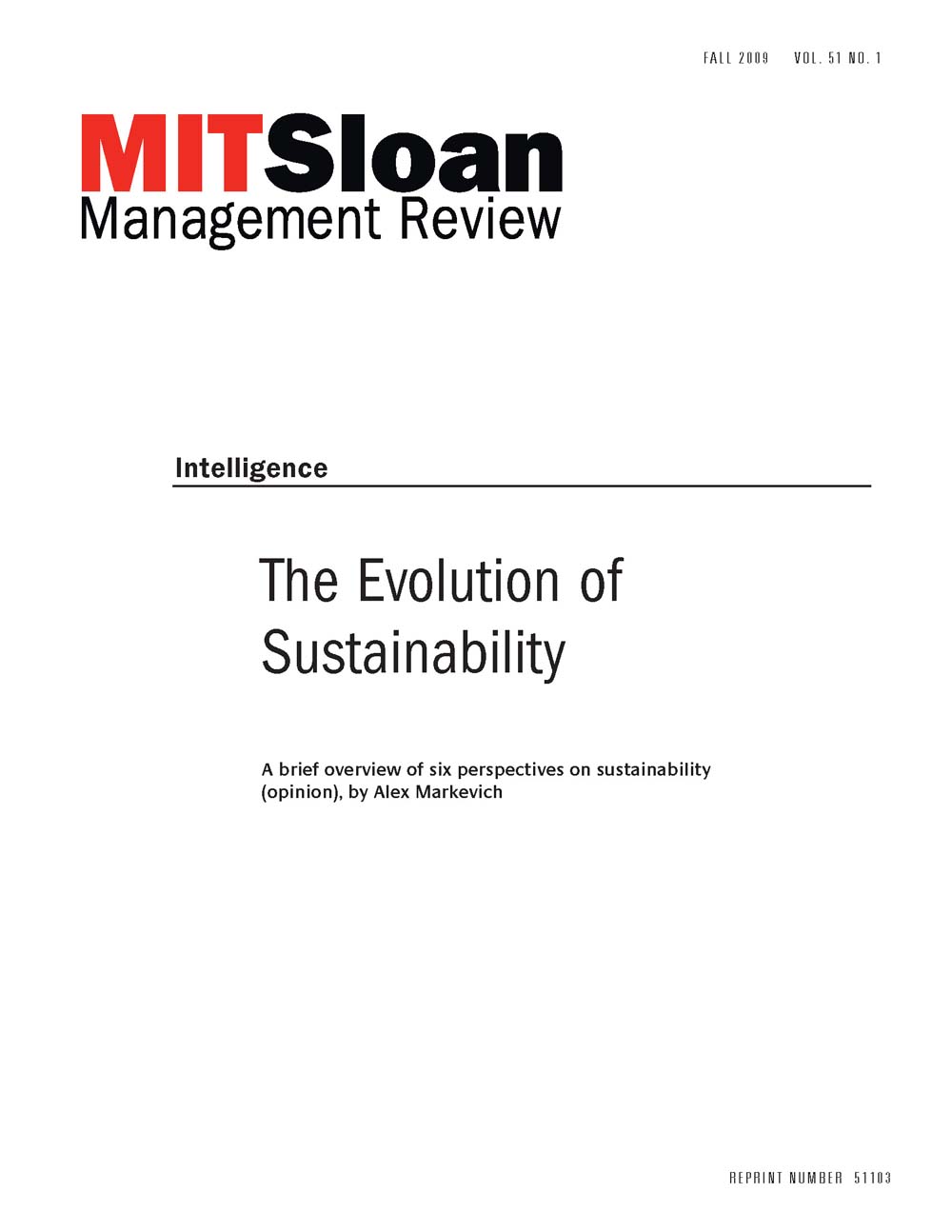Some companies have discovered that a commitment to tackling societal problems can lead to high performance and profits. It can help strengthen a company in the eyes of its customer base, its employee base and the general public. Technology has made information about a company's behavior anywhere in the world more readily available. If companies take a proactive approach, they can turn this increased consumer awareness into a benefit. Rosabeth Moss Kanter explores how companies like Proctor & Gamble, Starbucks and Diageo thought about societal benefits and created new products to support them.
Social Responsibility
Page 11 of 14
-
Why Size Matters
In an interview that is part of SMR’s ongoing series on the business of sustainability, MIT’s Ernest Moniz, the director of the MIT Energy Initiative, explains why blending big-company culture with entrepreneurial innovation is the challenge that leaders must learn to meet. According to Moniz, large energy companies are the ones that have the capacity in terms of resources to scale up new technologies to impact climate change in a relatively short period of time. But to do so they need to be both “big and nimble.” “The number one overarching issue, which does pose business opportunity, business risk, and a need to rethink business models, is carbon constraints,” says Moniz. “As you know, 85 percent of our energy is fossil fuel. Fossil fuel equals carbon. Controlling carbon goes to the very core of the way we currently supply energy.” There are multiple strategies for dealing with innovation in a carbon-constrained world, including mergers and acquisitions, and investments in research. But the innovation culture is not natural to energy companies; until now they have been rewarded for reliability, not innovation. Cultivating an open mind, dealing with uncertainty, and balancing competing requirements necessary for innovation ultimately comes down to the judgment of senior executives.
-
The Change Leadership Sustainability Demands
Sustainability initiatives have three stages, each requiring differing organizational capabilities.
-
The Four-Point Supply Chain Checklist: How Sustainability Creates Opportunity
Supply chain managers can impact sustainability in areas such as packaging and transportation.
-
8 Reasons (You Never Thought Of) That Sustainability Will Change Management
MIT Sloan Management Review's first annual Business of Sustainability survey revealed much about what executives are thinking and doing about sustainability-driven concerns right now--as well as what's impeding their attempts both to capture opportunities and defend against threats. The most widely credited leading thinkers at the sustainability and management intersection, though, wanted to explore something else: the ways that many fundamental management and strategy practices will be transformed by the pressures that sustainability issues are already bringing to bear. This article identifies eight significant ways that current management expectations and practices will be affected by growing societal and economic understanding about sustainability. Among them: how labor productivity can be dramatically increased by sustainably designed workplaces; how companies "bump into" sustainability-related choices, even when they don't look for them; how a company's sustainability profile will become a proxy for the organization's overall management quality; how innovation results are improved by pursuit of sustainability-related outcomes; how sustainability efforts within an organization lead to more productive collaboration across typical organizational silos; and how transparency and trustworthiness will become increasingly consequential to competitive success.
-
Does Sustainability Change the Talent Equation?
When it comes to tapping into the passions of employees, the opportunities and threats that sustainability presents are two sides of the same coin.
-
Long-Viewed, See-Through, Collaborative and Retooled
As sustainability-related pressures change the competitive landscape, what kinds of capabilities and characteristics will that landscape demand of companies that aim to thrive? Here's what Business of Sustainability Survey respondents and sustainability thought leaders say.
-
One CEO's Trip From Dismissive to Convinced
In 1994, when Interface Inc.’s founder and CEO Ray Anderson began to think about his legacy, it made him uneasy. Deep down, Anderson realized that the business model of the commercial carpet manufacturing company he had founded 20 years before was based on “digging up the earth and turning petroleum and other materials into polluting products that ended up in landfills” — not something he wanted his grandchildren and great-grandchildren to remember him by. So at age 60 Anderson broke with the old model and began anew. Standing up to naysayers (whose ranks included associates, suppliers and Wall Street analysts), he set out to transform Interface from a traditional business built on consumption and waste to one whose focus — that is, beyond profitable growth — would be zero waste and restoring the earth. Since the start of the journey, Anderson and his associates have confronted technical barriers that no one could have anticipated. But inch by inch, kilowatt-hour by kilowatt-hour, recycled pound of carpet by recycled pound of carpet, Anderson’s vision has moved closer to reality. In addition to becoming increasingly efficient in its energy and materials usage — for example, 89% of Interface’s global electricity and 28% of its total energy come from renewable sources — Interface prides itself on its ability to turn an increasingly large percentage of its carpet into new product. It is also proud of the influence its sustainability efforts are having on other companies. This article presents a timeline showing how Anderson’s “mental model” changed and how he and his company moved along the road to sustainability.
-
The Business of Sustainability: What It Means to Managers Now
In 2009, the business concerns with sustainability intersected with an urgent global economic crisis.
-
The Evolution Of Sustainability
Many companies are taking the first incremental steps toward sustainability, such as energy conservation and recycling. That's a good start — but going further can yield significant competitive advantage.












